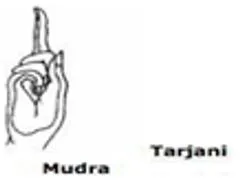

3rd July 2024 (9 Topics)
Mains Issues
Context
A recent report by the International Panel of Experts on Sustainable Food Systems (IPES-Food) has highlighted alarming trends in global hunger, exacerbated by recent global crises and climate impacts. The report coincides with the United Nations' review of progress towards Sustainable Development Goal 2 during its High-level Political Forum on Sustainable Development.
Key Findings of the Report:
- Nearly 30% of the world’s population faces food insecurity, with 42% unable to afford a healthy diet.
- Projections suggest around 600 million people could be hungry by 2030, moving the 'zero hunger' goal further away.
- Impact of Global Crises: The COVID-19 pandemic, Russia-Ukraine war, and climate crisis have severely impacted the global food system's resilience.
- Role of Localized Food Supply Chains: Local food systems, termed 'territorial markets', have demonstrated resilience and equity in the face of shocks. These systems include public markets, street vendors, cooperatives, and urban agriculture, supporting smaller-scale producers and ensuring community access to nutritious foods.
- Benefits of Localized Systems:
- Access to diverse and nutritious foods.
- High resilience to global shocks and adaptability to local needs.
- Affordable prices and environmental sustainability benefits.
- Support for livelihoods of small-scale producers and preservation of food cultures.
- Challenges Faced by Local Markets:
- Penalized by trade policies, investment priorities, and agricultural subsidies favoring corporate interests.
- Lack of infrastructure such as sanitation and storage facilities poses challenges to scalability.
What is Zero Hunger?
- Sustainable Development Goal 2 aims to achieve "zero hunger".It aims to end hunger, achieve food security and improved nutrition and promote sustainable agriculture.
- To measure the success of achieving this, the UN outlines five targets to indicate our progress towards Zero Hunger:
- Access to safe, nutritious, and sufficient food year-round
- End malnutrition in all its forms
- Increase agricultural productivity
- Sustainable food systems and agricultural resilience
- Diversified crops and seeds
Situation in India:
- As per the 2023 Global Hunger Index, India is ranked 111 out of 125 countries and falls into the seriouscategory of hunger.
- India has by far the highest number of 'zero-food' children at 6.7 million (67,00,000), accounting for almost half of all 'zero-food children' across 92 countries
- According to the UN's Food and Agricultural Organisation (FAO) 'The State of Food Security and Nutrition in the World, 2022 Report', 224.3 million people, or 16 per cent of India's population, are undernourished with 53 per cent of reproductive-age women also being anemic.
- According to the “State of Food Security and Nutrition in the World 2021” report, around 9.8% of the Indian population is undernourished.
- Causes: The compounding impacts of have exacerbated social and economic inequalities and slowed or reversed previous progress in reducing hunger in many countries.
- Climate change
- Conflicts
- Economic shocks (Unemployment, poverty)
- Food wastage
- Global pandemic
- Russia-Ukraine war
- Key Initiatives in India: National Food Security Act, 2013; Mid-Day Meal Scheme; Pradhan Mantri Matru Vandana Yojana; National Nutrition Mission (Poshan Abhiyan)
Recommendations for Policy Action:
- Redirect Public Procurement: Support sustainable small-scale producers through government purchasing policies.
- Shift Subsidies: Invest in infrastructure for 'territorial markets' to enhance their capacity and reach.
- Protect Local Markets: Safeguard local food systems from corporate dominance through policy interventions.
- Promote Sustainable Practices: Encourage biodiverse farming and diverse diets to ensure food security and environmental sustainability.
PYQQ. How far do you agree with the view that the focus on lack of availability of food as the main cause of hunger takes the attention away from ineffective human development policies in India? (2018) Q. Hunger and Poverty are the biggest challenges for good governance in India still today. Evaluate how far successive governments have progressed in dealing with these humongous problems. Suggest measures for improvement. (2017) |


Mains Issues
Context
The Ministry of Mines in India is gearing up to introduce a Production Linked Incentive (PLI) scheme aimed at enhancing the recycling of critical minerals. This initiative comes in response to a tepid response observed in recent auctions of critical mineral blocks. The scheme aligns with recommendations from NITI Aayog and complements the Battery Waste Management Rules (BWMR), 2022.
What is Critical Mineral Recycling?
- Critical mineral recycling involves the extraction and reuse of essential minerals like lithium, cobalt, and graphite from electronic waste (e-waste) and spent batteries.
- These minerals are vital components in technologies such as solar panels, wind turbines, energy storage systems, electric vehicles (EVs), and consumer electronics.
- Challenges
- Indian recyclers currently face challenges in extracting battery-grade minerals from e-waste, highlighting the need for capacity-building initiatives.
- The scheme aims to address these challenges by providing incentives based on the type and value of minerals recycled, thereby encouraging innovation and technological advancements in the recycling sector.
How will the proposed PLI Scheme help?
- The proposed PLI scheme aims to foster a circular economy by reducing reliance on virgin ores and promoting sustainable practices.
- It targets enhancing domestic supply chains for critical minerals, thereby boosting India’s self-reliance in clean energy technologies and reducing environmental impacts associated with mining.
- The PLI scheme is designed to incentivize the production of recycled critical minerals through advanced recycling technologies and infrastructure investments. It seeks to encourage the recovery of high-purity minerals suitable for reuse in primary inputs.
What is the need?
- Increasing demand: The growing demand for critical minerals is sustaining supply to meet the anticipated boom. The IEA predicts that meeting future demand will require doubling current mineral inputs for clean energy technology by 2040.
- Critical Minerals forms part of multiple strategic value chains, including
- Clean technologies initiativessuch as zero-emission vehicles, wind turbines, solar panels
- Information and communication technologies, including semiconductor
- Advanced manufacturing inputs and materials such as defence applications, permanent magnets, and ceramics
- Green commitments: India’s international commitments towards reducing carbon emissions, which require the country to urgently relook at its mineral requirements for energy transition and net-zero commitments. While the clean energy transition will undoubtedly require greater mining, recycling will play a role in sustaining future mineral supply.
Fact Box: Critical Minerals in India
|


Mains Issues
Context
The United Nations Educational, Scientific and Cultural Organization (UNESCO) issued a stark warning, stating that a staggering 90 per cent of the planet’s land surface could be degraded by 2050. According to the World Atlas of Desertification, 75 per cent of soils are already degraded, directly affecting 3.2 billion people. If business as usual continues, the current trend may increase the impact to 90 per cent by 2050.
Causes of Land Degradation
Land degradation is the deterioration of land quality, often resulting from human activities and natural processes, which adversely affect its productivity and ecosystem functions. Several factors contribute to land degradation:
- Deforestation: Clearing of forests reduces vegetation cover and disrupts ecosystems.
- Overgrazing: Excessive grazing by livestock leads to soil compaction and loss of vegetation.
- Unsustainable Land Use: Practices like intensive agriculture without proper soil conservation measures degrade land fertility.
- Urbanization and Industrial Expansion: Conversion of natural landscapes for urban and industrial purposes reduces vegetative cover and disrupts ecosystems.
Impacts of Land Degradation
The consequences of land degradation are widespread:
- Loss of Soil Fertility: Reduced capacity of soil to support plant growth and agriculture.
- Erosion: Soil erosion accelerates, leading to loss of fertile topsoil.
- Ecosystem Destruction: Disruption of natural habitats and loss of biodiversity.
- Economic Loss: Decline in agricultural productivity and increased costs for land restoration.
- Climate Impact: Contributes to climate change through reduced carbon sequestration and altered water cycles.
- Health Effects: Impacts human health through food insecurity and water scarcity.
Fact Box:Government Initiatives in India
Combatting Desertification
|
|
PYQ Q: The process of desertification does not have climate boundaries. Justify with examples. (2020) |


Mains Issues
Context
Stampedes during religious gatherings are tragically common in India, often due to poor crowd management and safety oversights. Recently, a stampede in Uttar Pradesh’s Hathras district claimed the lives of at least 116 people, predominantly women, highlighting the urgent need for effective crowd control strategies.
What is a Stampede?
- A stampede is characterized by the chaotic movement of a crowd, resulting in injuries and fatalities. It typically occurs due to panic triggered by perceived danger, overcrowding, or the rush to achieve something desirable.
- Causes of Stampedes: Stampedes are primarily caused or exacerbated by panic and can be prevented through improved design and management of spaces where mass gatherings occur. Factors contributing to stampedes include:
- Lack of adequate lighting
- Uncontrolled flow of crowds
- Structural failures like collapsed barriers or buildings
- Blocked exits or evacuation routes
- Inefficient design of infrastructure such as entrance doors
- Fire hazards and other safety oversights
- Reason behind casualties:
- Traumatic asphyxia: There is partial or complete cessation of respiration due to external compression of the thorax and/or upper abdomen.
- Myocardial infarction: Heart attack, caused by decreased or complete cessation of blood flow to a portion of the heart
- Direct crushing injury to internal organs, head injuries, and neck compression.
Preventive Measures
- Effective crowd management is crucial in mitigating stampede risks. Strategies include:
- Live Surveillance: Monitoring crowd density, bottlenecks, and disturbances to anticipate and prevent incidents.
- Communication: Coordination between organizers, local authorities, and law enforcement to manage crowd behavior and ensure timely interventions.
NDMA’s guidelines for Crowd Management
Notable Stampede Incidents
|


Prelims Articles
Context
'Abhaya mudra' or the motif of an open palm, has become a topic of discussion in India’s Parliament.
What is Abhaya Mudra?
- In Sanskrit, "mudra" translates to 'seal', 'mark', or 'gesture'. It holds deep cultural significance in Hinduism, Buddhism, and Jainism, influencing various aspects like iconography, dance forms, yoga, tantra, and martial arts.
- Abhaya Mudra: This specific mudra represents an open palm gesture symbolizing fearlessness and protection.
- It can be widely seen in Hindu, Buddhist, and Jain iconography, it is a powerful symbolic gesture.
- The Abhaya Mudra typically involves the right hand raised to shoulder height, with the palm facing outward and fingers upright. The left hand may rest in the lap or perform another gesture simultaneously.
- Symbolic Meaning: Known for its protective qualities, the Abhaya Mudra signifies the dispelling of fear and offers reassurance to those who perceive it.
- In Indian culture, the Abhaya Mudra serves as a timeless emblem of courage and safeguarding, depicted prominently in religious art and practices across various traditions.
Other Important Mudras (in Buddhism)
|
Mudras |
Symbol |
|
Dhyana Mudra The gesture of absolute balance, of meditation. The hands are relaxed in the lap, and the tips of the thumbs and fingers are touch each other. |
 |
|
Dharmachakra Mudra The gesture of teaching, usually interpreted as turning the Wheel of Law. The hands are held level with the heart, the thumbs and index fingers form circles. |
 |
|
Vitarka Mudra (Intellectual argument discussion) The circle formed by the thumb and index finger is the sign of the Wheel of Law. |
 |
|
Tarjani Mudra (Threat warning) The extended index finger is pointed at the opponent. |
 |
|
Jnana Mudra (Teaching) The hand is held at chest level and the thumb and index finger again form the Wheel of Law
|
 |
|
Karana Mudra Gesture with which demons are expelled |
 |
|
Uttarabodhi Mudra (The gesture of Supreme Enlightment) Two hands placed together above the head with the index fingers together and the other finger interwined. |
 |


Prelims Articles
Context
< p class="mb-3">As election campaigns intensify in Britain, the role of opinion polls, particularly those utilizing Multilevel Regression and Post-stratification (MRP) modelling, has gained prominence. MRP is employed by pollsters to estimate voting patterns at a local level based on national sample data.
What is MRP?
- Multilevel Regression and Post-stratification (MRP) is a statistical technique used by pollsters to predict voting behavior across different geographical areas.
- Unlike traditional polls that survey a few thousand respondents, MRP draws from tens of thousands of respondents, providing more granular insights into voter preferences.
- Key Features of MRP:
- Statistical Modelling: Pollsters build models that analyze how voting intentions vary based on respondent characteristics such as age, income, education, and past voting history.
- Post-stratification: This involves adjusting survey data to match demographic characteristics of the population, ensuring accurate representation of various voter groups.
- Local Level Estimations: MRP allows for predictions at a local level, which is crucial for understanding electoral dynamics in different regions.
Opinion Poll in India
Exit Polls
|


Editorials
Context
The advent of Generative AI (GAI) poses unique challenges to existing legal frameworks and judicial precedents. The current legal infrastructure, designed for a pre-AI era, struggles to govern the rapidly evolving technology, necessitating a comprehensive re-evaluation of digital jurisprudence.
Safe Harbour and Liability Fixation
- Introduction to the Issue: The issue of liability fixation for intermediaries hosting content has been a persistent and contentious one. The Shreya Singhal judgment upheld Section 79 of the IT Act, granting intermediaries ‘safe harbour’ protection contingent on meeting due diligence requirements.
- Contrasting Views on GAI Tools: GAI tools are seen by some as intermediaries, similar to search engines, while others view them as conduits for user prompts, complicating the application of safe harbour protections.
- Legal Conflicts: Legal conflicts involving GAI outputs, such as the 2023 lawsuit against OpenAI, highlight the challenges in classifying GAI tools and assigning liability, particularly when user reposts are involved.
Copyright Conundrum
- Existing Provisions: Section 16 of the Indian Copyright Act 1957 does not accommodate AI-generated works, raising questions about the need for revisions to include AI-authored content.
- Questions of Authorship: The 161st Parliamentary Standing Committee Report indicates that the current Copyright Act is ill-equipped to address authorship and ownership by AI, leading to uncertainty in liability for copyright infringement.
- Enforcement Challenges: ChatGPT’s ‘Terms of Use’ shift liability to the user, but the enforceability of such terms in India is uncertain, complicating legal actions against copyright infringements by AI tools.
Data Privacy and Personal Information
- Privacy Jurisprudence: The K.S. Puttaswamy judgment laid the foundation for privacy jurisprudence, leading to the Digital Personal Data Protection Act, 2023 (DPDP), which introduces rights to erasure and the right to be forgotten.
- Challenges with GAI Models: GAI models' inability to unlearn absorbed data poses significant challenges in exercising control over personal information, despite DPDP provisions.
- Implications for Personal Data: The integration of personal information into AI models raises critical questions about safeguarding individual rights while leveraging powerful AI technologies.
Steps to Pursue
- Learning by Doing: Granting temporary immunity from liability to GAI platforms through a sandbox approach allows responsible development and data gathering to inform future regulations.
- Data Rights and Responsibilities: Overhauling data acquisition processes for GAI training to ensure proper licensing and compensation, potentially through revenue-sharing or licensing agreements.
- Licensing Challenges: Creating centralised platforms for licensing data, akin to stock photo websites, to streamline access and ensure data integrity against historical biases and discrimination.
UPSC Mains Question
Q. Evaluate the impact of generative AI on data privacy and personal information. How can individuals exercise control over their personal data within the framework of the Digital Personal Data Protection Act, 2023?


Editorials
Context
The Indian labour market faces a paradox of labour shortages despite a surplus workforce. This is compounded by skill gaps and search frictions that prevent efficient matching between employers and job seekers. The rapid spread of digital public infrastructure offers a potential solution to enhance labour market efficiency.
Labour Market Paradox
- Skill Gaps: Many graduates lack the skills demanded by employers, contributing to the paradox of labour shortages in a surplus economy.
- Search Frictions: Search costs, risks, and imperfect information hinder the seamless matching of employers and job seekers, as highlighted by economists like Peter A. Diamond, Dale T. Mortensen, and Christopher A. Pissarides.
- Informal Networks: Informal job searches through social networks help reduce search costs but are limited in scope and efficiency.
Role of Digital Public Infrastructure (DPI)
- Reducing Transaction Costs: Digital platforms like the United Payments Interface and Open Network for Digital Commerce have reduced transaction costs in various sectors. A similar platform for the labour market could enhance job matching efficiency.
- Connecting Employers and Job Seekers: A digital platform could facilitate connections between employers and potential workers, addressing search frictions and improving labour market dynamics.
- Boosting Wages and Productivity: By improving information flow and matching efficiency, a digital platform could help workers find better-paying jobs, thereby boosting wages and productivity.
Steps to Enhance Labour Market Efficiency
- Developing a Digital Platform: Building a digital public platform to connect employers with job seekers, similar to successful models in other sectors.
- Integrating Welfare Schemes: Incorporating key welfare schemes into the platform to support job seekers and enhance their bargaining power.
- Addressing Skill Gaps: Focusing on skill development initiatives to align the workforce with industry demands, complementing the digital platform's job matching efforts.
UPSC Mains Questions
Q. Discuss the potential impact of a digital public platform on labour market efficiency in India. How can such a platform address the paradox of labour shortages in a labour surplus economy?


Editorials
Context
The report titled "State of Marginal Farmers of India 2024" by the Forum of Enterprises for Equitable Development (FEED) highlights the growing challenges faced by marginal farmers due to climate change and shrinking farm incomes. Despite being the largest category of farmers, they find it difficult to access government schemes, which are crucial for their survival.
Issues Faced by Marginal Farmers
- Increasing Numbers and Shrinking Incomes: Over 65.4% of Indian farmers are marginal, owning less than one hectare of land. Despite this, the number of beneficiaries under the PM-Kisan Samman Nidhi scheme has decreased, possibly due to rising non-farm incomes or the scheme's limited support for those with marginal incomes.
- Lack of Access to Resources: Marginal farmers struggle to access water, seeds, technical inputs, and credit. This hampers their ability to sustain and grow their agricultural activities.
- Climate Change Impact: Extreme weather conditions have intensified challenges for marginal farmers, leading to crop losses and increased reliance on supplementary incomes from non-farm activities.
Policy Recommendations and Government Initiatives
- Diversified Agricultural Practices: Policies should focus on dairy, livestock, horticulture, beekeeping, and technical support services. This approach acknowledges the limited availability of land but the abundance of capital, labour, and technology.
- Linking MNREGA with Climate Resilient Agriculture (CRA): Integrating MNREGA with CRA can provide much-needed support to marginal farmers, as seen in successful initiatives in states like Odisha, Maharashtra, and Bihar.
- Replicating Successful Models: Programs like Odisha's KALIA and Madhya Pradesh's Bhavantar Bhugtan Yojana should be considered for pan-India replication. These programs support marginal farmers, sharecroppers, and landless agricultural workers, ensuring that no lands are left fallow.
Role of Government, Society, and Market
- Collaborative Approach: The report emphasizes the need for a collaborative approach involving government, civil society, and market players to create a supportive ecosystem for marginal farmers.
- Civil Society's Role: Farmers' collectives, self-help groups (SHGs), and primary agricultural credit societies (PACS) can improve farmers' bargaining power and access to services and markets.
- Market Initiatives: Promoting climate-smart agriculture through initiatives like ITC's climate-smart villages, micro-insurer IBISA's partnerships, and Tata Trusts' Collectives for Integrated Livelihoods Initiative can help marginal farmers adapt to changing conditions.
UPSC Mains Questions
Q. Analyze the effectiveness of current government schemes aimed at supporting marginal farmers in India. How can these schemes be improved to ensure better reach and impact?



